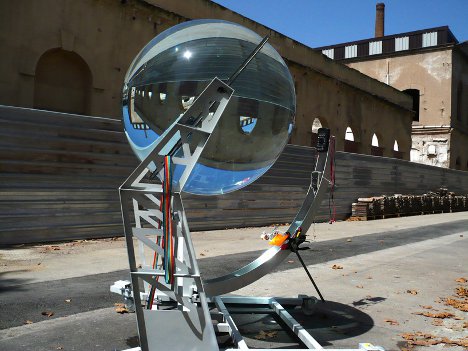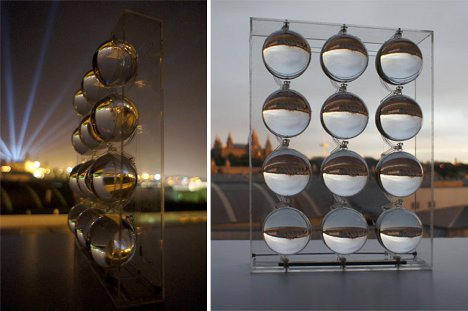Credit: Larry Morris
this could be awsome
http://www.extremetech.com/extreme/134305-so-long-silicon-researchers-create-solar-panels-from-cheap-copper-oxide

Researchers from the University of California and Berkeley Lab have discovered a way of making photovoltaic cells out of any semiconducting material, not just beautiful, expensive crystals of silicon. In principle, this could open the doors to much cheaper solar power.
Almost every solar panel on the market is made by cutting off two thin (200 micron, 0.2mm) slices from a large crystal of silicon, and then doping them with impurities to enhance the photovoltaic effect — phosphorous to make n-type silicon, and boron to make p-type silicon. These slices are layered together, electrodes are added to the top and bottom, the whole thing is framed in protective glass — and voila, a standard photovoltaic cell.
Now, in theory, you can dope any semiconductor — but cheaper, more-readily-available semiconductors, such as copper oxide, don’t retain dopants very well, eventually leading to the breakdown of the p-n junctions. Silicon holds dopants very well, but it isn’t cheap.
To get around this problem, the Californian researchers have developed a new type of solar cell called screening-engineered field-effect photovoltaics, or SFPV for short. Instead of physical doping, SFPVs use a minute electric field to achieve the same doping effect. While this electric field is present, the p-n junction remains and the photovoltaic cell continues to produce a lot of electricity. The energy required to produce this electric field is apparently a lot less than the energy produced by the photovoltaic effect.

The electric field effect isn’t new (you may have heard of field-effect transistors?), but its application in photovoltaic cells is novel. The main problem that the UoC and Berkeley Lab researchers came across is that you need a contact
above the semiconductor to deliver the electric field — but of course that obscures the semiconductor from sunlight. The solution devised by the researchers is simple: You either use a very thin contact, like
graphene(which is transparent), or you use a series of narrow, fin-like contacts (pictured above).
What’s next? “This research opens up scores of new semiconductors (many metal oxides, sulfides, and phosphides) for practical photovoltaic applications, so we are currently identifying the ones with the greatest potential for low-cost, high-efficiency solar cells,” says Will Regan the lead author, to
Ars Technica.
Once the best material has been found, it still won’t be an easy ride: there’s a huge industry (mainly in China) dedicated to producing standard photovoltaic cells, and they lack the equipment or expertise to produce SFPVs. It isn’t quite as bad as the computer chip industry, where
trillions of dollars are invested in silicon, but it will still take considerable effort to shift the industry towards SFPVs. The cost savings are there for the taking, though — and I dare say, the first company to produce solar power that’s significantly cheaper than fossil fuels is onto a winner.





